Don't wanna be here? Send us removal request.
Photo


#153 Rams (2018)
Director: Gary Hustwit
United States /German
“The best design is no design”- Dieter Rams
The world is a messy place. Our contemporary culture is pieced together in a bewildering ad hoc manner, it’s a wonder it is functions to the level of sobriety that it seems to. To make my point, and offer up a contrast, watch a few episodes of Hoarders on Netflix. There you will witness just about every level of psychosis, filth and variety of trash that modern life has enabled. A condemned house filled with trash and tchotchkes, to the point of structural distress can be understood as the end point of the failure of design. Comedian George Carlin does a bit about us just building more spaces to put our useless stuff, and architect William Mc Donough talks about how any design, at the end of its functional lifespan, that winds up in the city dump, is a failure of design. It has become superfluous trash, a toxic layer of flotsam from modern culture’s ineptitude concerning waste within the specter of mass production.
Now watch the sparkling white Gary Huswit documentary of famous industrial designer Dieter Rams. Rams became best known for his painstakingly austere designs of modern products; record players, Braun shavers, furniture, etc. It’s a world view that despises clutter, unnecessary ornamentation, and shitty craftsmanship. Just for a moment, image a world like that.
People who are obsessively clean will love this documentary. It is a full expose on an uncluttered, well designed life. Everything is in its proper place and functionally considered. This point is driven home in the film by shots of Rams pruning his bonsai trees. Yes, it’s going to come down to those pesky details; the excessive packaging of products, the extra layers of paint to hide inferior construction, the mindless tchotchke on the shelf to help alleviate the expanse of ugly wall holding up the ugly shelves of our modern life. In the world of Dieter Rams, all this shit is pretty much gone, or addressed in such a way as to not continue to be shit. While Ram’s aesthetic –or anti aesthetic- might strike some as symptomatic of paranoia or fanatical control; I would welcome it as a fresh contrast to the quagmire the 21st century currently finds itself in. No point in clearing your mind in a yoga class only to trip over the clutter piled up in your living space when you get home. Ever been frustrated with a product so poorly designed the better option is to just discard it? Ever confronted the bewildering array of components required to plug in or charge electronics. There’s miles of this stuff… years of it. Can’t we just step back from the acceleration and think it through a little better before we commit to a million of something. I think it’s dawning on us that we have the dangerous capability of taking bad ideas extremely far.
I get the sense mankind is trying to sort some of this stuff out. Larger mechanisms and institutions in our global life, held over from the last half of the twentieth century, don’t seem to be aging very well. There is a lot that needs to be reconsidered, simplified, and implemented with more care. Dieter Rams stands as the epitome of high modernism in the world of design. The twentieth century was supposed to have cleared up a lot of unnecessary stuff, that was the main thrust anyway. Condescendingly, we can see modernism’s quest as somewhat quaint now – that noble but naïve world held up by gasoline, steel girders, and Helvetica, seems to have spun out of control. But here is where Dieter Rams and his monk like austery seems like a radical idea again. I long for simplified design. I think the world is getting over designed, and overly complicated, and this takes its toll on every level of our existence. I’m not a luddite. I enjoy and prosper from the technological breakthroughs, but too much is too much. Not everyone needs a cooking show, not everyone should be famous or noticed. At some point it might serve to nurture the essential. Someone can design a good product that works and doesn’t break the bank. We can question planned obsolescence in pursuit of making something worth a damn, that’s not too much to ask.
Dieter Rams saw this coming. He saw it in the world around him and he did something about it. You may not like him, his vision or his products. Perhaps your world is world a little fuzzier around the edges; a world that prefers the musty dirty patina of time, the stained pages of history with its grimy fingers, and abhors the antiseptic whiteness of modernism. If so, Dieter Rams is not your hero. But the film is worth the watch to anyone. If anything it shows what modernism might have been, what kind of clean utopian organization it offered, a clean quiet respite in a world that was quickly succumbing to the effects of rapidly multiplying shittyness.
Worth the watch, worth the consideration.
https://filmjrnl365.tumblr.com
11 notes
·
View notes
Photo

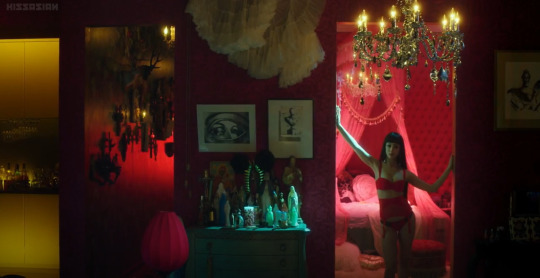


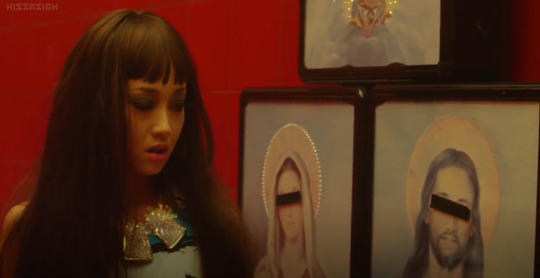

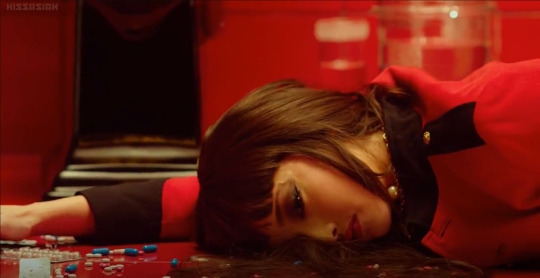

#152 Helter Skelter (Heruta sukeruta) (2012)
Director: Mika Ninagawa
Japan
“We’ll be forgotten, We are machines for the processing of desires.”
“The most fascinating thing about stardom is that it is a kind of deformity, like cancer. A fascinating face in a state of collapse.”
The whole time I’m watching this, I kept thinking about Andy Warhol. This is not a film about the sixties or pop art, but on the phantasmagoria of consumer culture. It’s an old tale – the misfortune that seems to come as part of the dual package of beauty and power. For our main character Lilico, vanity is all consuming; it is the product and process her identity is entrapped in. The emotional / psychological pressure of manufacturing endless prurient fantasies eventually gives way, and comes crashing in upon Lilico’s psyche. It’s an old story, and in this film, one that is not given any real new twist.
What is remarkable about this film is the way it looks. From the opening shots to the end frames it is a visually stunning spectacle. A lush, glossy, neon infused, hyper fabricated spectacle that allures and transfixes the viewer. Every seamlessly perfect photoshopped beauty that stares back at us from a fashion magazine, becomes an important catalyst in this film. The movie becomes a two hour demonstration on the vulgarity and power of beauty, and the control it exerts on the monetization of our desire. Being fashionable could be the downfall of this film. It will probably get dismissed as adolescent, self-consumed, too beautiful and picturesque for its own good; visually too gorgeous on its surface to be taken seriously, too coy to deliver any depth of meaning.
But, hold on a minute. Let’s not forget the main point here. Despite its somewhat predictable storyline, what the film really offers us is seduction. The alluring power of beauty and flawless sensuality. This is escapism. It is what movies have been peddling from day one. It is what fashion keeps dangling in front of its audience – a chance to transcend the ordinary, the ordinariness of ourselves. The mechanisms of spectacle and appeal are like sirens luring men to their watery deaths, the pursuit of desire and beauty becomes all-consuming and the self gets lost. We have seen and experienced this before, and this is what keeps bringing me back to Warhol. Andy Warhol was fascinated by the process and spectacle of fame. The careful manicuring of a dream that is maintained and propagated through the repetitious images of glamour fed to us through media. Repetition and verification help sustain this illusion, and the film’s extensive use of mirrors and reflection emphasize the idea that we the audience, as well as Lilico herself, are transfixed by the power of the image. Much like the Narcissus caught and absorbed by his own reflection, we succumb to the intrigue of the elusive entity – something more perfect, unobtainable.
These reflective mechanisms are exactly what this film delivers. In many ways, its storyline is secondary. One could turn the sound and subtitles off and still be enraptured by the visuals alone.
When we are not bombarded by the lushness of beauty we are pounded by spotlights and strobes, light directed at us as much as a model or a patient on a table. The reverence of the image, the worship of obtainable beauty is given a subtle reinforcement by the religious icons / idols scattered throughout Lilico’s sumptuous neo –Rococo apartment. Perhaps they might just be cheeky props, but there is a serious comparison to be made here. Lilico has an entire wall filled salon –style with images of herself. There are also images of Christ and Mary, their eyes redacted out with black bars. Idols that can see and idols that can’t. A not so subtle correlation to our character, but religious tokens blend well into the glittery décor. Nothing is off limits, not even the sacred – after all what could be more sacred than desire?
Lilico is a monster, an expensive creation born of syringes and expensive clandestine surgeries. she is a creature, a machine programmed for a single task –to disseminate beauty. If successful, fame and popularity are the byproduct of this transaction. But it is a risk that comes with a hefty cost. The ultimate price to be paid for recognition is that of becoming irrelevant, obsolete – no longer the subject of adoration. The film sprinkles in clips of armies of adoring fans, who at any moment can shift their allegiance from praise to scorn. Vicious, vindictive teen age girls, exact a kind of character assassination on their own idol. Where they once manically parodied every tangible nuance of their idol, they now recoil in revolt and en masse move on to the next diversion.
Glamour must be seen to survive, it is relational in nature. This is its one liability. And when it is ignored, it essentially dies. This is the emotional trajectory of Lilico. The rest of the film’s story and characters serve as warnings against vanity’s inevitable downfall. We have built entire cultures / societies on the pursuit of fantasy. It is a monster we have created. It is an idol offering transcendence. This is how beauty wages war against death.
“If you want to know all about Andy Warhol, just look at the surface of my paintings and films and me, and there I am. There’s nothing behind it. “
filmjrnl365.tumblr.com
60 notes
·
View notes
Photo




#151 Jazz Loft According to W. Eugene Smith (2015)
Director: Sarah Fishko
United States
During the movie a comment is made as to whether photography can change the world. It was treated as a naïve, romantic, basically absurd premise, and not worth much thought. This struck me as odd, mainly because I didn’t consider it a questionable or absurd premise at all – I thought it already had changed the world.
This is an excellent documentary on W. Eugene Smith the famous 20th century photographer, and his studio space at 821, 6th Ave in New York’s Flower District. From his window Smith began recording the world outside, the ever changing routine of the city as a kind of existential theater. Soon the recording began to involve sound recordings of just about every strata of daily life, radio broadcasts, ambient noise, conversations from visitors and jazz. The building was home to a number of underground creatives in the 1950’s, and became one of the go-to spots that hosted all night improvisational jam sessions by what was to become the pantheon of America’s jazz giants. Smith was there due to his long / obsessive hours in photographic darkroom production, and with recorder in tow, became the fly on the wall to a critical part of post war American musical creative subculture. Any lover of jazz, the Beat era and musical history will enjoy this documentary. It’s a rather gritty portrayal of the Benzedrine fueled jazz subculture that was formative to America’s modern identity, as the world emerged from World War II.
Smith became the chronicler of America during this time, and was a prominent photographer of American life mid twentieth century. His loft studio was where he spent uncountable obsessive hours in the dark room and gradually packed the space and walls with thousands of photos, ephemera and the latest recording equipment. Through this kind of artistic hoarding is revealed the frenetic life of the famous photographer, and the documenting of late night jam sessions that lasted through the night as musicians stumbled home in the early dawn hours, some just kept on playing. The recordings catch the marathon improv sessions that ushered in a new musical idiom.
This is a good film that catches a rare glimpse of a critical time in American culture and in American musical history. It’s a world that is still very much a tactile place – a black and white, photographic world not overcome by electronic mediation and the omnipresent reality of the screen. It’s also an expose on loneliness. There was a lot of disillusion and anguish in the 1950’s. Despite the whitewashing of the infant television medium, there was a swath of American culture, hidden in the dark that orbited the realities of racism, homosexuality, drug –use, and a wholesale rejection of mainstream culture. There was a price to be paid for being the outsider in America. For a land that espouses freedom, there is an obvious and heavy weight of conformity that these artists of this era had to react against. This is part of what it meant to be modern –one had to be outside the norm, a bit rebellious, a bit caustic and confrontational, but above all, new and innovative.
There in the midst of this strung out, late night, amphetamine fueled, booze toppling landscape was W. Eugene Smith, camera in hand, recorder in the hallway, quietly observing at the back of the dingy loft. The result? A fascinating fly on the wall perspective of the horn blaring turning point in American history.
filmjrnl365.tumblr.com
7 notes
·
View notes
Photo



#150 American Dharma (2019)
Director: Errol Morris
United States
“Culture is upstream from politics.”
American Dharma is the latest in Errol Morris’ growing catalog of political documentaries that does some dramatic and compelling forensics into American political culture. In this film, Steve Bannon and all that he entails is presented as the subject of the film. The documentary has Morris using historical American cinema to frame and parallel the conversation he is having with Steve Bannon. With my first viewing of this film, I found myself in agreement with Morris and his assessment of Bannon, and the leverage his strategies had on the Trump presidency. Morris admits he was scared. Scared of Bannon and the whole alt –right agenda, and especially Trump, who he says stood for “nothing”. Naturally Bannon has an answer. The answer is the long range plan to forge a new Republican Party to take back the middle class working man. A disgruntled and disenfranchised demographic that has been betrayed by globalization. Globalization for Bannon and his followers is shorthand for loss of American jobs to foreign workers, porous border security; a general ideological backlash against an American culture that has betrayed them and their expectation of the American dream and its attendant values.
What has become effective in Morris’ films on modern American political history, is the ominous soundtrack and visual collage that augments the direct interviewing of the subject. This has been done with Robert McNamara, Eric Olson, Donald Rumsfeld and now Steve Bannon. The part I like, though not always successful, is Morris’ attempt through conversation to get at some personal, existential core of those he interviews. The camera becomes judge and jury for those people who have access to power, and shape some of the most important decisions in our nation’s history. Or, his camera interview records those who have been on the receiving end of some of these same decisions. Ultimately, Morris tries to get at what made these people think and act the way they did. As a viewer, we get to listen, away from the usual yelling and media clutter, so that we can see: body language, admissions, denials, confessions, confusing pauses, and in some private way, what the hell these people are really like. The “human” face that is revealed is both fascinating and grotesque.
The most frightening pattern that begins to emerge from Morris’ political documentary films is also a major part of American Dharma. We are watching a kind of nightmare evolve in our country, and at the center of this disruption are “rational” agents who have found themselves at the helm of this enormous American experiment. We would like to think these people are rational, competent, compassionate, and have the public’s interest at heart- and usually this is the personal argument they give. Invariably their personal and therefore political motivations metastasize into a very frightening, and dangerous mutation of Manifest Destiny. So, to buy into Bannon’s political theater, here’s what you need to believe:
1. The world is at a tipping point, a dangerous tipping point, and radical change is needed.
2. I / we are here to save you, and I have your interest at heart. This is my duty / calling.
3. There is and always has been an elite, and it is steadily robbing you of your freedom.
These arguments and their paranoia have been hoisted by every side of the political spectrum, and these same emotions help solidify Bannon’s position, and mobilize his acolytes against the “Washington elite”.
This movie, after the initial viewing, has left me with a bitter taste in my mouth. Bannon epitomizes the ugly side of the current political culture. Since Trump assumed office, I’ve come to despise some of the blustering, militant rhetoric of this newest brand of American idealism. It’s a malignant and myopic patriotism that justifies its own hubris and aggression, but when it happens to feel guilty (rare), it sprinkles in some half mumbled correction or concession. In this film, the weaponized cultural dialogue is what Bannon calls the “blunt instrument”, which was used in the 2016 election to subvert and re-align America’s traditional political sensibilities. Bannon is convinced we are in a revolution (and he may not be off base here) on the path to another financial meltdown, and this latent middle class hostility will ignite a revolution in this country. I don’t dismiss his paranoia at all, I take it seriously, but he doesn’t really offer any legitimate plan in its place. It’s methodology is to muddy and discredit the mainstream media, to inundate it with bullshit and hperbolic paranoia disguised as reasonable content. The political spirit of the times wants to base itself solely on the wholesale removal of the current political architecture. It’s a repackaged scorched -earth campaign that monopolizes words like, freedom and patriotism, and symbols like the American flag into a Stalinesque purge that will be the colonic that a degraded American political system needs to regain its freedom, legitimacy,, and I guess its “proper culture”. All of this collective, marginalized middle class anger gets wound up into a stupid kind of Americanism that has Bannon waxing over American movie heroes whose narrative embodies the ideological / mythical battle of the nation’s ongoing political culture war. I see it more as opportunist and lazy actually, and by that I mean it seems to put all its effort into burning down the house rather than bettering it. It’s delusional posturing, and is seduced by power. It devolves into a sad rehash of the gritty John Wayne hero that rides into the script to save us, and put us all back on the righteous path. It’s a palatable nihilism that barters in religious / spiritual redemption. Americans pride themselves on this kind of iconoclastic can-do spirit, we take it as our birthright, part of our cultural DNA. It’s a secular catharsis, all good and fine, as long as these are informed actions, and empathetic decisions that manage to make their way into the political cornerstones. However, I’m afraid that by the time Bannon and Trump enter this austere narrative, it’s simply an organized version of an emotional lashing out. True in its own way, but also akin to a spoiled child in a tantrum. This is the part that is scary, embarrassing, and mystifying. Ironically, it might also come as a valuable and necessary safety valve for our republic, if what Bannon says is correct. In the end I’m left with: this is what politics looks like when it’s “downstream from culture”, and it’s willing to say “go fuck yourself” to everything, just because it can. This is what it looks like when “freedom” is misinterpreted as near sighted, self-righteous mandate to destroy without offering a better solution. That is why it’s stupid, that’s why it’s lazy- and that’s why it’s dangerous.
Required viewing for anyone wanting to see how far down the rabbit hole the 21st century is going.
https://filmjrnl365.tumblr.com
1 note
·
View note
Photo




#149 A Marriage Story (2019)
Director: Noah Baumbach
United States
This is not an escape. If you want a movie to do the heavy lifting of offering a mindless transportation into fantasy and entertainment, this film should be avoided. On the other hand, if you think movies and art have some responsibility to plumb the depths of our lives, and reflect back to us some distillation of deeper truths, A Marriage Story fits this expectation.
Overall, the film is emotionally claustrophobic. Even with the balmy sunlight of California, the ever tightening tension of the film works its way to a boiling point in a sparse Los Angeles apartment. At the center of the story is an intimate account of an unravelling marriage, and the dispute over custody of their child.
With the percentage of broken marriages in America, the movie should be relatable to a wide swath of the population. But maybe, I’m off base here and the movie isn’t really about marriage at all. Perhaps it is relatable to anyone who has fallen out of love. From that vantage point, A Marriage Story takes on the mythic proportions of a Greek tragedy, where the characters’ every action or motive magnifies in power as it cascades through their respective lives. Even the subtle dismissive body language of their emotionally detached child is heartbreaking, and hits the viewer like a body blow. Not all clues are subtle. While the couple initially tried to split in a rational, amicable manner – soon lawyers are involved and the process of disentangling lives becomes hectic, expensive, and punitive.
Scarlett Johansen, Adam Driver, and Laura Dern all deliver excellent performances. What is made apparent in the story is the psychological motivations, and desires of each of the characters. There is no shortage of toxic professional ambitions, personal regrets, parental baggage and general emotional betrayal. Naturally, these all go up like a tinder box when the actual divorce process gets underway, and to counterbalance all the domestic terrorism, the viewer keeps an eye on the child.
This movie is a meditation on the minutiae that makes up our daily lives. The epic struggle of Sissyphus has been reduced to the drudgery of prepping food for dinner. Thankfully, those moments of hope and empathy come searing through, accentuated all the more by the relentless strategizing forced by marital litigation. The close of the film is hopeful, at least that is the way I saw it. Yes, divorce is now a huge part of American cultural reality, and despite this we all seek some sort of equilibrium and resolution. The tragedy here is the love lost and discarded. It is also found in the confusion of the child. But people, kids included, are resilient and hopefully we make our way into another day. Perhaps it’s a better, sunnier day, and we can distance ourselves from the anger and pain. Perhaps we can learn to better handle the weight of regrets we carry with us.
https://filmjrnl365.tumblr.com
0 notes
Photo
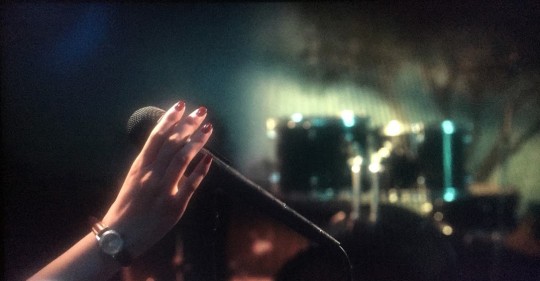
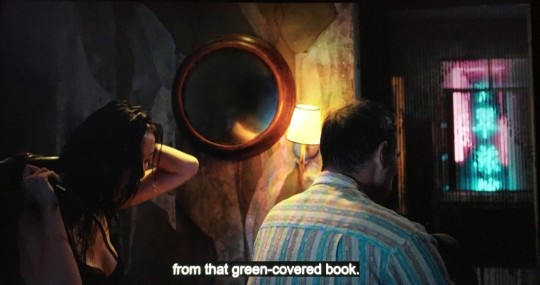


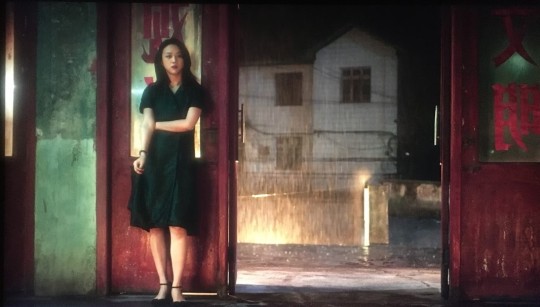


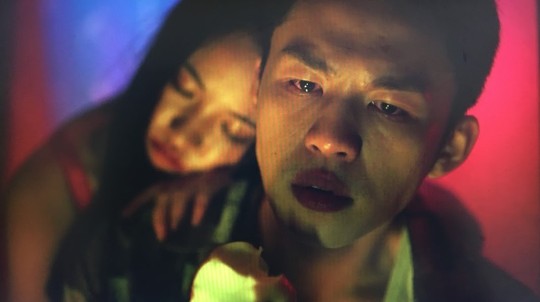

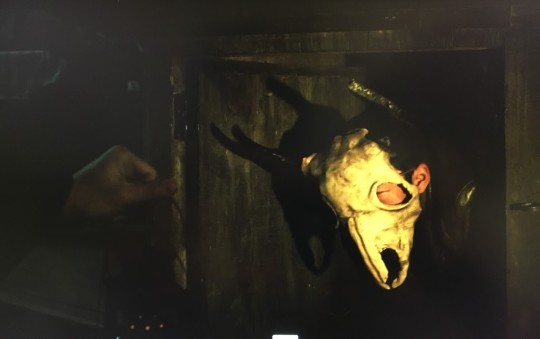



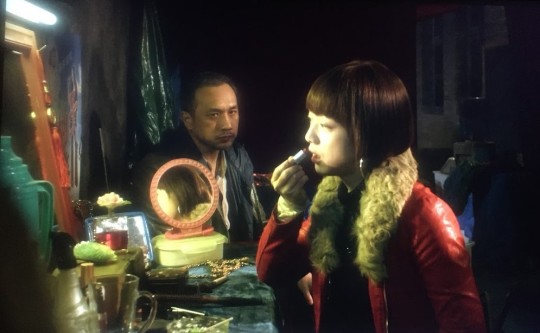

#148 Long Day’s Journey Into Night (2018)
Director: Gan Bi
China / France
“She was always disappearing and reappearing, as mysterious as that abandoned house.”
Gan Bi’s Long Days’s Journey Into Night is an alluring and murky descent into a labyrinth. It does a good job of translating the odd dis-associative feeling and loaded imagery of a dream into a narrative two hour plus in length. A haunting soundtrack, surreal settings, time dislocations and gorgeous cinematography by David Chizallet, make the movie an intriguing and aesthetically mesmerizing encounter.
The film is essentially in two parts. The opening title shot falls out of the ether, and divides the movie in almost the exact middle. After this break, the film becomes increasingly languorous and intertwined. The choreographed camera work and flowing composition help to smoothly transition the scenes, and pull the story along at a deliberate pace. While the slowness will no doubt be frustrating to many, I found I liked it, and it does afford the viewer time to become deeply immersed in the absurd beauty of the film. There’s a lot in this film that reminds me of Wang Kar Wai, but Long Day’s Journey hits a much more somber and mysterious note. While a movie like In the Mood For Love pulls at feelings of loss and nostalgia; Long Day’s Journey Into Night takes us into a dark, almost Bardo -like setting, that unfolds into itself like the dark realms of our subconscious.
The story is circular in structure. The opening scene pictures a woman’s hand holding a microphone. We see painted fingernails and a watch on her wrist. This same broken watch will reoccur at other points throughout the film, and will be employed as a symbolic device to help tie both ends of the movie together.
Also, this will not be the only reference to fractured time. A grimy round wall clock is removed from a whitewashed wall to make way for a photographic portrait of the recently deceased father. The clock’s removal exposes the wall’s discoloration and faded paint, making a circular halo behind the portrait, turning the photo into a shrine-like ghost. The wall clock is stuck at 7:50, the next time we see this clock the hands have moved to 9:00. The third time, the clock is seen in a watery reflection as its hands appear to be being manually reset by our protagonist, Luo Hongwu.
Images of note are the frequent use of mirrors, tunnels, water and reflections. For example, though sometimes small in scale within the frame, once one begins to look for mirrors throughout the film, their placement becomes conspicuous, and like other images in the story, they carry a significant symbolic weight. Tunnels and passages, with their requisite sinister lighting, serve as transitional spaces that host or link critical encounters for the characters. Water and rain continually seeps into the story, and contributes to the dripping cave-like context of this strangely populated underworld. In fact, by reading the film in two mirror-like halves, (using the opening title as the break) you begin to notice parallels and symmetry in characters, locations, and interactions.
I knew by the middle of this film that it was going to be one of those films that moves in and sets up camp around the emotions long after you are done watching it. It carries into the rest of waking life like an unsettling experience we can’t shake off or come to terms with. The cinematography and coloration in the film is some of the best I have seen. It’s a visually compelling work, which slowly apprehends and transports into a bizarre labyrinth, and lets you follow with the camera through the strange reality it reveals. By the second half of the story we are led down a dark indeterminate path, a mineshaft, or into an abandoned prison-city where our protagonist continues to encounter increasingly mysterious situations. Two particularly arresting passages stand out. The first features an encounter with a small boy who emerges out of a dark enclosed space wearing a horned cow skull. He is a kind of keeper of secrets or person who understands how to navigate through this underworld, but the character is also likened to the minotaur residing at the center of the labyrinth. There is also the added reference/layer between this boy and that of the aborted child, believed to be a boy, fathered by our protagonist, earlier revealed to him by his lover WanQiwen. A hushed passing remark is made between them that he would have taught the boy ping pong. Well, in fact this is what he is asked to do by the boy who resides in the dark tunnel, in order to barter his way out of this maze-like surreality. The two characters bond with one another in their brief time together, and again, it is these absurd, but emotionally weighted encounters that provide the dream–like energy to this part of the story.
The second arresting passage pictures a festive carnival like event. It features a karaoke performance stage with all its colorful lights set against the murky disheveled darkness of the prison-city. In this passage the two flirtatious characters (via great camera transitions) float over the scene like disembodied ghosts, who somehow have magically taken flight by spinning the (boy’s) eagle emblazoned ping pong paddle. It’s a creepy, haunted and beautiful passage that imparts a kind of magical dimension to a scene that serves to bring two lovers together.
The last hour of this film is done in one continuous and superbly mapped out shot. It can slip by un-noticed because the transitions of place and differing shot depths are handled so poetically. With the increasing tension and strangeness of the story and its characters, the lack of visual interruption reinforces the film’s ability to transfix and lead the viewer through this dark, aesthetic maelstrom.
There is no crashing resolution to the story. The unfolding of this tale is not predicated on building up to a singular climax. The film is a descent, a submersion into an altered state, a strung together itinerary of strangely off, but deeply consequential encounters. There is a specifically poignant line in the film that sums up its cinematic /psychological position: “The difference between film and memories is that films are always false. They are composed of a series of scenes. Memory mixes truth and lies. They appear and vanish before our eyes.” Luo’s voice over provides a perfect template in which to approach some understanding of the film. Our memories, like our films are tenuous entities. Their emotional gravity can exert a strong pull on us even as we acknowledge their fragility and distortion with the passage of time.
Long Day’s Journey Into Night barters in the dark mechanical psychology of our dreams. It is embedded with the erotic tinge of past lovers who wantonly re-appear to us in the darkness of our mind’s nightly travels. As we wake from the spell, its emotional charge still lingering within us, we find we are unable to easily dismiss the ghostly imprint left behind once we have slipped away from its vivid and mysterious magnetism.
https://filmjrnl365.tumblr.com
22 notes
·
View notes
Photo



#147 Black Swan (2010)
Director: Darren Aronofsky
United States
Perfection, then you die. When artistic director (Vincent Cassel) tells Nina (Natalie Portman) to “lose her self” in order to fully embody her performance, that’s exactly what happens. Black Swan is a meditation on tragedy, paranoia, and the psychic / emotional wreckage that accompanies obsession. Those that for whatever reason become driven to achieve perfection usually discard morality somewhere along the way. Nothing is beyond sacrifice when it comes to obtaining the desired goal. The traits required to achieve perfection go beyond simple hard work and seem to also require a bad mix of hubris, narcissism and an unchecked impulse to control.
Nina checks most of these boxes. As scary as the transformation of her character is in this film, the real monster is the mother (Barbara Hershey). The ever – vigilant stage mom that doubles as a kind of prison guard, keeping Nina sequestered in her room or prey on her own daughters insecurities with not so subtle emotional blackmail. Of course, the mom is living through the daughter, and the daughter has to navigate the burden of guilt, since it has been made clear that the mother gave up her career as a premier dancer, in order to raise the daughter.
There’s a kind of Oedipal quality in this whole opera. A sacrifice will be made, knowingly or unknowingly, and the characters each play out their fate in this surreal tragedy. The movie does an excellent job of weaving together the classical music, the classic story, and at the same time situating the whole drama in a modern setting.
https://filmjrnl365.tumblr.com
0 notes
Photo



#146 AMY The Tragic Story of Amy Winehouse (2015)
Director: Asif Kapadia
UK
We lost a voice for the ages in Amy Winehouse. In an age of over–produced pop, Winehouse seems to have almost accidentally staggered into the music industry, and wasn’t prepared for the burdens that come with stardom. This documentary by Asif Kapadia does a good job of showing the other side of Amy Winehouse. We see the portrait of a young girl naturally gifted with a strong singing voice, and a woman that attempts to fill the childhood void left by her absent father; absent that is until Amy begins to make headlines and pile up wealth. The dad makes a magical re-appearance into her life, and seems to begin a campaign of ingratiating and micro managing his daughter. Pair this scenario with a freeloading boyfriend and some lethal drugs, and you have the key ingredients for the downfall of Winehouse. To be fair, all the blame can’t be put squarely into their column, Amy seems to have had tendencies to test her limitations long before these men became fixed within her orbit., She seems to have been a headstrong child, and coupled with a mother that exercised little or no control over her, Amy’s personal and professional life became a kind of rampage through addictive behaviors such as eating disorders and narcotics.
Not to diminish the tragedy of Amy Winehouse’s story, but it does make one wonder how many talented young women have succumbed to the dedicated suicide of self-destructive behavior. How much beauty, talent and love has been tragically snuffed out of this life; and how many shitty dads and boyfriends are left as partial culprits in this wreckage? We’ll perhaps never know exactly what tips the scale that drives people to these ends, perhaps they don’t know themselves. The movie does not offer exact answers, nor could it. What it does offer is real time footage of the best and worst aspects of everyone involved in the life of Amy Winehouse. It also offers a heartfelt piece of wisdom by Tony Bennett: “Take it easy kid. Life teaches you how to live it, if you live long enough.”
It’s not a new tale, but the film gives plenty of footage of the raw power and soulfulness of Amy’s voice. Her links to jazz set her apart from the backwash of ordinary pop music. She was undeniably more sophisticated, innocent, talented, even dangerous in her own brutal narratives. At the end of it all we are left with the tragic legacy of Amy Winehouse, a singer with a unique, brilliant, beautiful voice, that gets smothered by the people, and destructive forces in her life.
https://filmjrnl365.tumblr.com
0 notes
Photo



#145 Citizenfour (2014)
Director: Laura Poitras
United States
This is my second time to watch this film, and it still troubles me. I’m conflicted about Snowden, and I’m conflicted about what Snowden has brought to my attention – namely the extent of the surveillance being conducted by our government upon its own citizens. The Orwellian backdrop of this movie accentuates the thorny nature of revealing sensitive information in the age of big data. The movie further exposes the unsettling reality that we are making up the rules as we go along, as we accelerate toward the world of drones, omniscient surveillance and artificial intelligence. For many, the rules are quite clear and Snowden is seen as a traitor and any relief offered under the banner of whistleblower is emphatically waved off. Of the numerous readings and podcasts I scour on the intelligence community and the state department, people under their employment see Snowden’s treason as unambiguous.
In the film, Snowden states that the investigation will turn more toward his identity and actions, rather than the discussion being about the government’s over-reach of domestic surveillance that was supposed to be a temporary counter-measure enacted by the Patriot Act. He was right about that, and that’s pretty much where the discussion has remained since he went public.
This documentary film, done by Laura Poitras should be required viewing for anyone who is foaming at the mouth over these kinds of sensitive security / information breeches. The tone of the film is not hectic, but is slow, deliberate, and ominous, as it becomes clear that while Snowden sits in his Hong Kong hotel room, whole branches of the U.S. government are mobilizing to seize him, and anyone associated with him for intimidation / interrogation. Those of us jaded and hypnotized by the typical lethargic gridlock of the American political system, get a peek into how quickly this same dysfunctional entity can coordinate into immediate action. This seems to be the reality we find ourselves in as part of the post 9/11 world. An open ended war on terrorism has embroiled Americans in a hyper bureaucratic / patriotic paranoia. While the nation’s political apparatus wants to defend against threats of encroaching socialism, or religious fundamentalism as venues destined to implement authoritarianism, we seem to be adopting some of those tactics.
Regardless of where you land on Snowden’s innocence or guilt, his deviousness or his altruism; this is a film that gives us all a foreshadowing of what life is going to be like in the age of encroaching digital surveillance. The need for these kinds of secrets, and also their release, will be ratcheted up with each successive year, and with each successive flare up in the war against terrorism. The murky boundaries between what is public vs. private will be scrutinized and also abused. What is permitted in the name of security will enjoy an unequaled elasticity, and the citizens of the 21st century could find themselves in a world where privacy is all but eliminated. This could be our version of Orwell, and the irony is we might be ok with it. I’m not sure we realize what’s being lost here. Whatever you think freedom looks like, or whatever you think that means – it may very well be the version deemed criminal in the realities of information warfare.
https://filmjrnl365.tumblr.com
7 notes
·
View notes
Photo
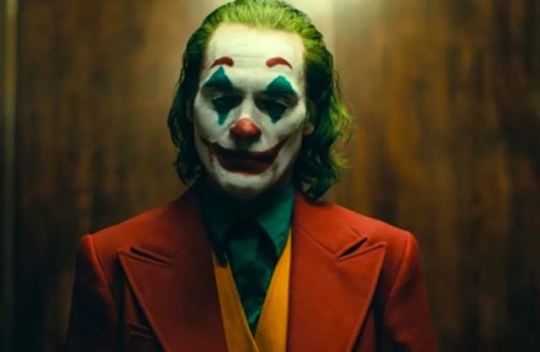
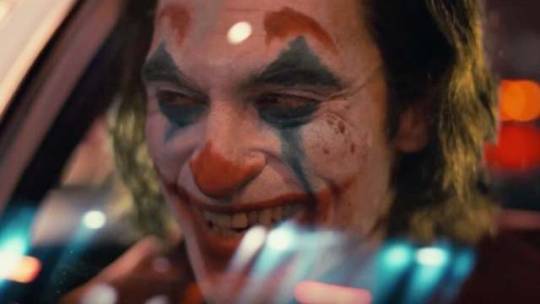
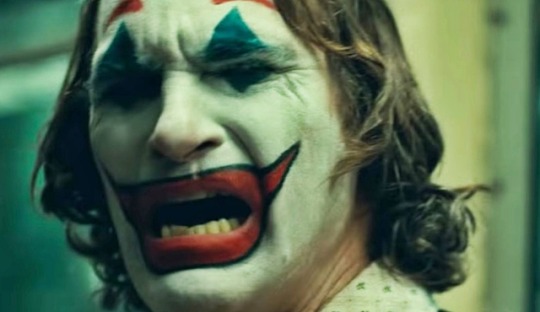
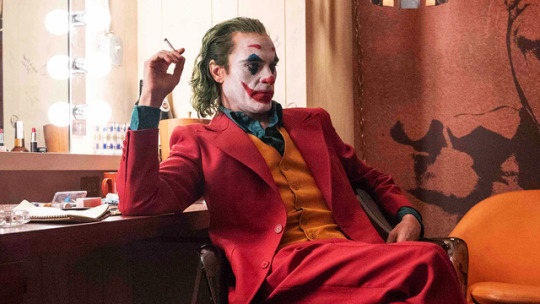
#144 Joker (2019)
Director: Tod Philips
United States
There’s nothing more dangerous than a man with nothing to lose.
Arthur Fleck (Joaquin Phoenix) has problems. It’s a short list, but his issues are substantial: he’s been picked on and brutalized, he’s out of a job, he’s on a ton of meds, he lives at home with his mom, but then again, his mom may not be his mom. That’s the core of his issues, but it’s the relentless nature of these problems that’s really getting to Arthur Fleck. Most people can and do endure similar problems, but they are able to overcome them, or the problems are relieved by change, and they are able to move on. But for Arthur, they remain a constant recurrence, and on each return the anger, pain and resentment builds, until it is impossible to handle it anymore. This puts Arthur Fleck in a dangerous position, the ominous unfortunate intersection where nihilism, opportunism, and a complete lack of concern for consequences merge. Arthur has lost the ability to care, and it’s been demonstrated to him that no one else cares either, so mad acts in a world gone mad seem justified, even necessary. And this is where the mental math of Arthur Fleck’s destructive actions begin to make sense in this story’s chaotic world
Director / writer Tod Phillips has Joker take a 122 minute nosedive into mental illness. This provides the itinerary for the lunacy, anguish and pandemonium that Arthur Fleck will unleash on himself and society. It will be ruthless, and seemingly arbitrary, but to the delusional Arthur Fleck- it will be justified. The film lingers over the dismal personal life that plagues Arthur Fleck. While I found this somewhat tedious at first, by the end of the film –time spent laying this character’s emotional groundwork paid off. A visceral scene that underscores the extent of Fleck’s derangement shows him alone in his kitchen, scraping its meager contents onto the floor, and then crawls inside of it himself. This scene perfectly encapsulates the extent of the inner conflicts in Arthur Fleck; conflicts that will facilitate the emergence of Joker. For his whole life, Fleck has run from pain and emotional confrontation. Working as a clown for hire, he has up to this point in his life, put on a happy face, and done his best to withdraw from the confrontations with life and its hard truths. But no matter how many pills he takes ,or counselors he visits, it’s a doomed strategy and it will no longer serve.
From this point forward in the film, I began to appreciate Phillip’s handling of the Joker’s narrative. What’s been discarded is the character’s over stylized outfits, any quirky hero gadgetry, and the unrealistic superhero tropes that heroes and villains seems to magically accumulate when they decide to get to work. Instead, Joker is an opportunist, he makes do with what is available to him. What others have forced upon him he accepts, what luck seems to accidentally drop in his path he utilizes, nothing is off limits in what he can employ to achieve his deserved retaliation. Gone is the need to hide behind an elaborate persona. No more elaborate costumes, simply use the leftover gear from your day job as a clown. Get a gun from a co-worker. Need to contact your suspected father? Easy, stalk him into the men’s restroom, or show up at his house and lure his child to the gate. You don’t need some fantastic criminal lair, or an arsenal of mesmerizing weaponry to get results, you only need the wounded mind of a revengeful terrorist and a pair of scissors. To my mind, Arthur’s practical opportunism was the scariest part of the character. Since Dr. Frankenstein, Hollywood and comics have groomed villains that are equipped with scientific intelligence and clever strategies for global domination. They were narcissists that were unlucky in love and therefore expended huge effort in remaining vindictive, secretive, and in not getting caught – in short, they had something to lose.
When Arthur Fleck, takes his anemic body, and clownish nihilism onto the talk show stage of Murray Franklin (Robert DeNiro), a few critical events transpire: 1. Arthur, now Joker, has the opportunity for a large public audience to finally get shit off his chest. 2. Being a guest on the talk show confirms his own delusions. Segments of the film depict Murray Franklin as a kind of infantile fantasy that Fleck could maintain. But the object of his fantasy has turned out to be just another jerk in a long line of abusers. Murray will eventually become the victim in this encounter. Shooting Franklin in the face is justified by Arthur Fleck / Joker, because Franklin had it coming – he was not the compassionate father figure willing to help an innocent soul, instead he was no different than the corporate thugs that abused their way into becoming Fleck’s first victims. In classic anti –hero fashion, the film sets up moral dilemmas for audience and character. In Arthur Fleck,we see a man actually trying to instill good in the world, we empathize and understand his emotional schism, but the world just won’t cooperate. As a result, the opportunity to retaliate through terrorism presents itself, and the offer is taken.
Joker has bought the trajectory of the cinematic monster / villain to a full conclusion. 1950’s sci –fi visualized the classic Hollywood monster as a creature outside of us, attacking the helpless citizenry. By the end of the twentieth century, the monster was within us. It dwelled deep within our secretive psychology and manifested in the form of madness, fear and hatred. By the time we reach Joker, the monster is now everywhere. It lurks inside us, and it runs rampant throughout a morally bankrupt society. It has infiltrated every institution, and never lets up, metastasizing at an accelerated rate. The world is out of control, and from this context of helplessness Joker seizes the opportunity to unleash his nihilism onto those who have ever wronged him. Now, the victim will become the oppressor, the bloodbath will ensue, and there is nothing to lose in finishing what is already well underway. The whole Joker narrative is a sober reminder of what we see in operation throughout the world today, and there are a number of political and moral situations in the movie that could be dissected through contemporary cultural analysis. The problems are many, and occupy every existential strata, from the singular to the systemic.
At some point, perhaps from the first five minutes, Joker stopped being a super-hero franchise film. It has subverted fantasy and costumes, for a particularly abrasive nod to realism. The scariest part of this film, is not the clown make up –that’s creepy for sure – it’s the idea that this is an entirely plausible scenario in today’s world. It’s a movie of a comic villain, so it’s off, but it’s not that far off. We look in the mirror and convince ourselves we’re not really sure how it all got to this point, but we do know, and it did. We can try to hide from the horror and crawl inside the fridge, or medicate ourselves, but these devolve into a form of denial. Inevitably, some will decide to lash out, to grab what’s available and take their justified revenge on others, and they’ll commit any atrocity with a straight face, comforted by the delusion of self-righteousness.
There’s no such thing as innocence anymore, ask Arthur Fleck. It’s time to put on a smile, step out into the world, and make the fuckers pay. After all, what is there to lose?
https://filmjrnl365.tumblr.com
3 notes
·
View notes
Photo








#144 Happy Hour (2015)
Director: Ryusuke Hamaguchi
Japanese
Happy hour is an exhaustive look into the private lives of four women in Kobe, Japan. It is an epic five hour distillation of the emotional psychodynamics of the women as they each reach pivotal realizations within themselves, and the consequences these truths have on those around them. This film will frustrate those who a narrative reliant upon mayhem, fast action and ear splitting noise. What Happy Hour offers is quite powerful, but it is a slow in depth meditation, and fastidiously restrained in its handling. Not many want to wade through over five hours of introspective conversations and confessions; but that is precisely the bulk of what Hamaguchi offers in Happy Hour, and in my opinion, results in a very compelling film.
The long duration of the film offers the viewer enough time to immerse into the separate trajectories of each of the four women. Over time we become familiar with the particular subtleties of their body language, attitudes, and above all we begin to sense the enormous weight of what isn’t always disclosed in their polite conversations. Each of these women, three of whom are married, have in some way come to accommodate the silencing of their inner desires. Whether through the confinements of family, society, or career, one by one they are each pushed to a critical point in addressing the repressed psychological / emotional volatility that is now beginning to make its way to the surface. This emotional reckoning is what Hamaguchi handles with intense restraint. There are no outbursts, crying jags, suicide threats or hysteria. At times it’s almost comical the level of courtesy extended in the middle of a conversation where someone is literally saying to the other person, “I don’t love you anymore.” The introspective quietness of the film, whether a stylistic treatment, or how such sensitive topics are handled in Japanese culture, is very affective within the context of the film. It reminded me of a modern version of a Noh play, where the audience is extended the time to mentally engage the magnitude of the story being told right in front of them.
The four women attend a seminar given by a young man, a kind of reluctant performance artist, who has a knack for delicately balancing chairs and other objects. This odd seminar turns out to be a venue where the ladies begin to encounter their inner selves and participate in physical exercises that require them to seek balance and trust with themselves and one another. This is a crucial point in the story, because the seminar, and others they meet there, begin to act as a catalyst for the emotional upheavals that begin to appear in each of their lives. To add to this, one of the women, Jun has decided to confess to the others that she is actively seeking a divorce. She has admitted to an affair and also admitted that she no longer loves her husband. From these two points, the film delves into the personal lives and secrets of the four women and begins to expose the romantic, emotional, even spiritual dissatisfaction that each of them has with their own lives.
Normally, one would want to forget these critical moments of domestic / existential crisis, but Hamaguchi delves deeper, even lingers on the slow turmoil the four women find themselves in. One passage in particular I re-watched several times; Sakurako ( Hazuki Kakuchi), the extremely reserved and passive mother of a teenage boy, enters the closing doors of a subway train to an embrace with one of the young men at the seminar, a man who she had previously rebuffed. She returns home at daybreak to her normally detached husband, and in a five minute conversation discloses the affair, the sex, and proceeds to come clean with a payload of grievances that have accumulated throughout their marriage. The brutal frankness of the admission and the measured response ratchets up the drama of the story. Watching these encounters, we know each of these characters is going to break or become consumed with the lie that each has perpetuated for themselves. Sure enough, while walking to work, Sakuako’s husband breaks down at a traffic intersection. Crouching down and overcome with the pain of her infidelity, and the devastating admission of her true feelings, he buries his tears in his coat sleeve. Stoically, two suited men next to him wait patiently for their turn to cross the street. These kinds of mute juxtapositions are scattered throughout the three part drama, coexisting amidst the beautiful cinematography and quiet dialogue of the film.
This is a really good film. For me, it’s characters leave an impression, the film lingers in the mind. It’s acted in the same way as what it portrays, those pivotal conversations and admissions that we mull in mind over and over again. Sometimes the truth comes in softly, and hits full force, a kind of ultimatum. It catches us unprepared and forces us into a hard decision. Any action from that point forward is part of a new reality, a reality where the once submerged demons of our inner lives are let loose into the world.
In Happy Hour, Hamaguchi, has over the span of five hours, carefully controlled a cataclysm. The nuanced acting portraying the four women in the story is excellent, and even those passages in the film that might try our patience serve their purpose to pace the film and builds the narrative toward decisive confessions and encounters. This is a film that wades into the emotionally resonant minutiae of our everyday lives, we might even call it boring, but it’s not. Instead we get to have a safe front row seat for a kind of emotional catharsis. This quiet spectacle can at times be brutal, but we are spared excessive carnage by the quiet reserved tone of the film, and the sincerity in which every character finally, honestly, and decisively, confronts the enormity of their own feelings.
https://filmjrnl365.tumblr.com
4 notes
·
View notes
Photo




#143 Gauguin: Voyage to Tahiti (2017)
Director: Edouard Deluc
French
This is another film about a famous artist, and the triumphs and struggles of their personal / creative lives. Another recent example is of this genre is Julian Schnabel’s, At Eternity’s Gate, which covers the manic life of Vincent Van Gogh. Both these films do a good job of not glamorizing their subjects. The whole endeavor of portraying nineteenth century artists could easily submerge in clichés and stereotypes, and lose sight of the historical context of these artists and their works. It would be easy to glamorize these artists, and Hollywood has a way of peddling this hyperbole. We see their works in movies, museums and glossy reproductions. We would like to think that these artists have made their way into historical consciousness the same way a movie star steps onto the red carpet. Or that their creativity hits them like a bolt from the blue. What gets lost in all the sensationalizing is the misery, uncertainty, hard work, and even the mental /physical problems a lot of these artists had to contend with. They lived in an unsanitized world plagued by syphilis, psychological maladies, and numerous infections and diseases; ailments that today you and I could stash remedies for into our travel case. As a result, we want to project the climate controlled security of our current world onto theirs. So yeah, to be like Gauguin, one simply packs up and moves to Tahiti, lounge in the sun, paint a little here and there, and then when you’re dead and gone some lucky customer sells one of your works at Christie’s auction house for thirty million dollars. It simply wasn’t, and isn’t, that easy.
So what instigated the move to Tahiti? Part of Gauguin’s problem with Paris was Paris itself. Too much time and creative energy gets sucked away simply trying to survive in the city. And to an extent Gauguin had become artistically disenchanted with what he saw around him. Deluc’s treatment of Gauguin does a good job of communicating the sacrifice and misery that accompanied Paul Gauguin’s move to Tahiti. Feeling stifled in Paris and desperately short of funds, Gauguin makes the journey. Though invited to this “new life”, his wife and family don’t want in on the ordeal. Probably a wise choice, since Gauguin seems to be unreliable as a father or financial provider. Upon arrival in Tahiti, Gauguin initially seems to have merely swapped locations in which to starve. As with some of the other artists of his generation, new brightly colored modern paintings were not exactly what one would call a hot commodity. Sales were sporadic, even non-existent. Both Van Gogh and Gauguin had to rely heavily on hand outs from friends and basically scrape by. However, the misery of Gauguin’s health and finances aside, he seems to come to an epiphany while in Tahiti. In his new found home and with a new wife whose is quite young at the time, Gauguin finds a kind of fundamental truth in the spare necessities of life in Polynesia. Though he trades the hardships of life in the city for an entirely different set of hardships, trying to establish himself in Tahiti (dysentery, heart trouble, lack of money food, fevers etc.) Gauguin flourishes as a painter and makes some of the most decisive images of his life.
Gauguin’s new young wife, Tehura (Tuhei Adams) becomes his muse. It is through her beauty and vitality that Gauguin begins to tap into the primal rhythms of nature, psyche and civilization itself. However, by the end of the film, we see a darker side to Gauguin’s disposition, his paranoia and jealousy keep Tehura locked inside their house, as Gauguin grinds out the days as a dockworker to make ends meet. What money Gauguin could procure, seems to have secured a decent set up in Tahiti. But in time Gauguin leaves Tahiti to return to Paris, but will return to Tahiti a second time, but life is not the same without Tehura. In the end, it’s difficult to get a read on Gauguin. For its time, his work found the emotional power that the primitive impulses in early modern art sought to accentuate. His quasi exile from Paris and its artistic legacy, did a lot to bring Gauguin’ own voice to his work. But this maturation comes across as secondary in this film. Deluc’s narrative really shows Gauguin as a man who was able to find true happiness and meaning with the world around him. He is forced to adopt and co-exist and in doing so finds some foundational truth.
We all search for something or someone that stirs our spirit, which becomes a reliable foundation for our well being. Sometimes we seek it through a long and arduous journey, sometimes it appears to us as accident, an unexpected encounter. But it is a transformative moment when we realize we have in some way reached the end, the result of those choices, and we recognize that we are here. We have arrived. There’s a number of scenes in this movie, where Gauguin (wonderfully played by Vincent Cassel) has these realizations. At times he is taking in the natural beauty of Tahiti, other times he is sketching or painting Tehura by candle light as she sleeps, and for those moments he has found paradise, and for most of us, that is what the whole journey is for. Even if the moment is fleeting, and it probably will be, there is the recognition of the power of being alive. This is what Gauguin had lost in Paris, and it’s what he was able to find in Tahiti –if only for brief moments.
https://filmjrnl365.tumblr.com
1 note
·
View note
Photo



#142 5 to 7 (2014)
Director: Victor Levin
United States
Well, I guess I’m a rube.
I try not to read reviews, but on this one I did – just to see how divergent my sense of this film was. This movie was mostly panned for its sophomoric clichés and farcical treatment of a coming of age love story. The critiques are not off base. There were plenty of passages during the film where I chuckled at the corn–ball awkwardness of the whole affair. It was all too perfect, too easy. In the short amount of time it takes to light her cigarette, the story introduces a young struggling writer who manages to secure a tryst with a gorgeous French woman, conveniently married to a forgiving husband. They agree to a date, there’s one rule –she’s only available from 5 -7pm. Arielle (Berenice Marlohe) is married, has kids, and affords quite a luxurious lifestyle, and apparently has the tacit understanding to maintain a boyfriend in all this. So, ok. I went with it. Not impossible, just improbable. The point here was, you knew there was going to be a relationship, and you knew that in time, the 5-7 rule wasn’t going to be enough and the hard choices were going to come into play. And sure enough that’s what happens. But here’s the thing, and I’m kind of embarrassed about this…I kept watching, and by the end of the film it was getting to me. Actually it hit me kind of hard. Apparently, I’m an easy target, because somewhere in this movie of awkward characters and bad one liners, there emerged enough glimmers of truth, to get me involved with this oddly improbable scenario about love.
Movie critics had issues with the klunky, romanticized premise, dialogue, and the somewhat tepid passion of the story. I agree with that, but to me the movie was more about how we handle the loss of love, or if we lose it at all. To what extent does it linger within our hearts, and never really leave our thoughts? There’s a significant pain involved with this. This movie is really another rendition of the old story about the love that scars us the deepest, or the “one that got away”. There is fertile ground for tragedy here, and it is somewhat glossed over at the end of the film. This could have been a stronger lamentation on the nature of this loss, but it didn’t get there. (This was the consensus of the other reviews.)
At the end of the story, years later, the two lovers meet again, and the connection is obviously still there. Both have continued on with their lives, and their respective spouses and children, but the tension of the old lovers meeting again is felt. In this brief but loaded encounter, spouse and children fade out of view, temporarily reduced to the level of obligations, while the two lovers silently, once again, endure the anguish for what might have been. Farewells are extended and they once again prepare to go their respective ways – but Arielle removes a glove to reveal her wearing the engagement ring Brian had given her years ago.
Perhaps this where the movie should have started. It would have spared us the improbable technicalities posed by open-marriage romance, and the embarrassing dinners with husbands and parents. Jealousy is almost entirely lost in this story. It surfaces once in the form of a stiff back hand slap from Arielle’s husband. Also, I never bought into the idea of Brian Bloom (Anton Yelchin) being a writer, even a beginning writer, but I really didn’t care. And I had to agree with other another reviewer that the horn rimmed glasses at the end of the movie didn’t work either. But, I kept letting these things go…why? Because, this movie was about fantasy. It was an idealized love that was perfect for a short time, but was all along imploding in front of our eyes. I watched this emotional train wreck play out in slow motion, and I was somehow absorbed into the inevitable pain that was going to encompass this situation. By the time their romantic separation takes place, we are at the tail end of the film, and we are left with chronological jump cuts in order to cover the duration of Brian’s sentimental despair. We don’t see Arielle, she is gone and has left only a letter.
There’s a bit of Woody Allen in all this. The gritty realism that is supposed to come with the backdrop of New York, is instead isolated to the finer areas of Manhattan. All of this is a set up. In Woody Allen, it’s a set up for comedy, In 5 to 7 it is a set up for an unexpected love, its loss, and the inevitability of living with the pain of what might have been. This is not a great film, but it could open a wound of nostalgia if you let it, or if you are susceptible. It does handle the volatile content of the loss of love, or the tragedy of love being relegated to memory. So yeah, it’s easy to dismiss 5 to 7 on any factual level, but it got to me anyway. If you want tough love, go watch Fight Club. If you want to enjoy implausible fantasy, the intoxication of falling in love, and the anguish of losing what is probably the greatest love of your life -this movie is worth your time.
https://filmjrnl365.tumblr.com
17 notes
·
View notes
Photo


#141 Downton Abbey (2019)
Director: Michael Engler
United States
If you didn’t already like Downton Abbey, you won’t get much from the movie. However, for anyone who enjoyed the trademark Britishness of the series, then the movie won’t disappoint. It took me about thirty seconds to decide to watch the series when I first stumbled across it. The production values, and the setting captivated me immediately, and I really enjoyed the entirety of the series.
The film does a decent job of closing this chapter of the story and paving the way for future stories. By now Downton Abbey is fighting an economic and moral battle against the onslaught of time and modernism itself. The Great War is over, the world is rapidly moving into modernization and Downton Abbey has thinned its ranks of starched servants. It’s become a full time job to maintain its privileged, traditional at all costs, Englishness.
Fans of the show knew this was coming. It’s been lurking in the background for the entirety of the story, but we were constantly diverted by the numerous plot twists that kept us tuned in every week. But that’s not the whole picture. I suspect I’m not alone when I shamelessly admit that I enjoyed Downton Abbey because I got to see the beauty of the place itself, the idyllic landscape, and the amazing costumes worn by each of the cast. I think the British audience found Downton Abbey with as much excitement as cold oatmeal, but the show delivered America’s idealized version of what British gentry looked like. This is not to say that Downton was inaccurate –I know a good deal of research and consultation went into production to make sure the social and sartorial details were handled correctly. But I think Americans secretly like this stuff. As much as we whine on about freedom and resist social classifications, we spend a lot of time breaking our backs to emulate the lifestyle those categories provide, the big house, the lawn, and doing damage control on family dysfunction.
Downton Abbey was, and is, an escape. A beautiful setting with mostly beautiful people, that at least on the surface, could put their egos aside long enough to apply themselves to a larger cause, whether that be war, love, duty, or the crankiness of tradition itself. If public discourse or civility got any better in America, I’d like to think it had something to do with Downton Abbey. If we were paying attention we might have gleaned some things that might come in handy in today’s world. 1. Be wary of phones, they are evil devices and should be used sparingly. 2. Dress for dinner, better yet, have someone dress you for dinner. 3. Take care of your employees- no one likes or respects a shitty boss. 4. Have some civility, quit yelling at one another, or at least take it into the drawing room. 5. Learn how to suffer in silence –this is where having the stately mansion comes in handy.
Downton was a moneymaker for public television. This was not an accident. It was a well written, well produced series. It came at a time when there was a lot of competition from streaming services, and its viewing numbers were sizable. The movie offered one last glimpse of grandeur and we had to bid farewell to a cast of characters that we had come to know over the span of this epic generational story.
It will be interesting to see if the idea gets a second incarnation, and if it does, it will have to meet a very high benchmark of quality.
https://filmjrnl365.tumblr.com
4 notes
·
View notes
Photo





#140 A Star is Born (2018)
Director: Bradley Cooper
United States
The story may not be new, and in some ways this will make the film predictable. With these obstacles in place, the film manages to deliver some extremely good performances from Bradley Cooper and Lady Gaga. While it may not be as much of a stretch for Lady Gaga to portray a young talented, undiscovered singer, she does so in a fashion that is emotionally compelling. Same goes for Bradley Cooper in terms of directing and portraying the main character Jack. You knew going into the story that alcoholism, pill abuse and professional jealousy was going to accelerate the demise of their new found love. But, despite the clear signals of impending doom, the two performers manage to sustain our attention and we go along for the ride into desperation and destruction.
This is a modern parable, like the old Greek myth of the sailor called to his doom by the seductive voice of the siren. Or the hero unable to purge the burdens of his own past. If there is fault with the film, it is this; at just the time where we begin to venture into the painful psychological motivations of these characters we are whisked away with either booze, pills, or a musical interlude. This mirrors exactly how the two characters live, and sustain themselves –they have music as some form of escape, but they also have it as a kind of burden.
A mention must be made of the cinematography on this film. It earned an Academy Award nomination for Matthew Libatique. Gorgeous coloration and well framed shots made the whole tragic demise rather beautiful to watch. The film spends a lot of time on close up and medium range shots rather than sweeping panoramas. This is a story where emotions register on the faces of the characters, tangled hair, beards, and drinks being thrown back. Jack sits alone backstage and smashes a rock of cocaine with the heel of his boot, then scrapes the remains into his drinking glass, finishes it off and heads toward the stage. Jacks pilgrimage into oblivion is relentless and hard to watch. A particularly poignant scene is Jack making his way on stage for an embarrassing spectacle where he pisses himself, as Ally accepts the Grammy award for best new artist. It’s a breaking point for Jack, their relationship, a spectacle that Jack tries desperately to atone for later in the story.
Things don’t end well. Another musician dead before their time. This leaves Ally to deal with the gaping void of Jack’s absence. Temporary resolution is found in the performance of a song – and this is where Lady Gaga does a hell of a good job in translating those emotions to the song, and thus to the performance. This may have been a story too long in the making, and too many renditions to put it into the ranks of being a great film, but it does deliver some profound performances in a beautiful way. Good film.
1 note
·
View note
Photo







#139 The Lure (2015)
Director: Agniesyka Smoczynska
Poland
Two mermaids walk into a nightclub….sounds like a set up for a joke, but actually it’s a musical. I’m not a fan of musicals, live or on screen, and this one didn’t convert me –but it didn’t repel me either. I suppose if one were to hand a musical over to David Lynch, something like this might emerge. The film is luscious to look at. The cinematography is dazzling in part due to lighting of the campy nightclub that sets most of the story. I’ll not give away the plot. Let’s just leave it at a pair of young girls –mermaids- emerge from the watery depths to pursue love and freedom. Sounds corny, and it is, but by the time we have waded through the surreal dancing and throwback night club crooners, the oddity of the whole menagerie is somewhat compelling.
I would assume that fans of musicals might find this mythic / discotheque / Polish musical a tad un-nerving. The overall emotional tone of the film is a bit dark at times, and it’s not afraid to venture into unsavory terrain. At other times the film is quite light-hearted and the caricatures in the story get played up.
Not quite Aquaman, not quite Alice in Wonderland, more like the Elephant man who walks into an 80’s disco and begins to transform into David Bowie. If that sounds interesting to you, take this as an endorsement. If your lips are curled in disgust because a musical needs to have proper ladies and parasols singing about their gentleman suitors, ignore the sultry calls of the siren- might not want to wade into these waters.
https://filmjrnl365.tumblr.com
1 note
·
View note
Photo







#138 Red Sparrow (2018)
Director: Francis Lawrence
USA
I hate to hear “the book was better.” I always rolled my eyes at that, but in the case of Red Sparrow, it is exactly how I would approach any kind of analysis of this film. Jason Matthews, the author of the trilogy, is a former CIA analyst. So the reading material is crammed with tradecraft minutia; information that the film simply won’t have time to delve into. This holds equally true for character development. The two main characters that the movie (and books) revolve around are not given enough time to reveal a lot of the subtleties that makes them interesting. So, my suggestion is to read the trilogy, then watch the movie – and you can see where the film has done a nice job of furnishing some memorable visuals, and also where it has glossed over some crucial passages.
With this disclaimer, I actually really like this film. It is visually rich in coloration and tone, able to convey the stark Russian landscape, the opulence of its traditional settings, and the weathered, anemic Cold War settings that drive the central conflict in the story. Red Sparrow takes the global intrigue and secrecy of espionage to a very personal space. Yes, there are larger geo-political and ideological techtonics that shape this spy narrative, but they are played out at the level of personal danger and sacrifice. Spies by nature need to be invisible, so obvious as to mingle into the background noise. But Jason Matthews has with exquisite detail filled in the missing cues and procedures relevant to staying alive and undetected.
If there is one criticism of the film (and again this will go back to the books); this movie could have been much bleaker and more sinister than what emerges on screen. Jason Matthews has created some truly evil sociopaths in his trilogy, and the depth of their sadistic ingenuity is barely touched upon in the film. Jennifer Lawrence was well cast for the role of the trilogy’s central heroine, Dominika Egorova. While the ethics of recent movies would probably cringe at promoting a central female character that plies her sexuality as a weapon of the state, this reality is at the core of Dominika’s emotional conflict. She endures the abuse by and for a state system in order to protect her ailing mother. It’s at best a calculated wager, and in some ways, she has no choice at all.
Red Sparrow is an excellent story. This film could stand as a “realistic” counterbalance to the James Bond myth, the illusion of the gentleman spy. Bond is a caricature of the past; a bow tied agent operating at a time when state departments, and the attending foreign diplomatic social scene, provided the genteel camouflage for spying on the other guy while chatting it up in some Baroque ballroom. Present day spies (according to Matthews) done really work that way anymore. More than likely, they look like the rest of us with all our shortcomings and frumpy clothing. But the money and the information changes hands, and everyone thinks their doing the dirty work for all the right reasons.
Spy movies, especially from the Cold War are a particular favorite of mine. It is interesting to see where the film process takes its creative liberties and separates itself from the banal, but dangerous truth of espionage. But in a post 9 /11 world, the spy story is apropos to the world we live in. Identities are stolen and traded, entire nations run massive covert operations to infiltrate and disrupt the very ideologies they have issue with. Whether it’s Stuxnet sabotaging the centrifuges for Iranian nuclear enrichment, or Russia pressing its finger on the scales of the American election process, spying and fucking with your enemy is alive and well in the 21st century. Thing is, in the 21st century, covert operations have become religious and they have become lucrative. There was always a bit of zealotry involved, but it has all come above ground, tradecraft has emerged as part of everyday business in a globally connected world.
Red Sparrow is a love story caught in the middle of all this shadow play. It’s a human story: erotic, hurtful, vengeful, corrupt and cautious. Try not to forget this as the movie takes you through the sordid and dangerous situations that the shapely and beautiful Dominka Egorova has to navigate to survive. And no matter what happens, never forget, that’s what it’s all about: survival.
https://filmjrnl365.tumblr.com
31 notes
·
View notes